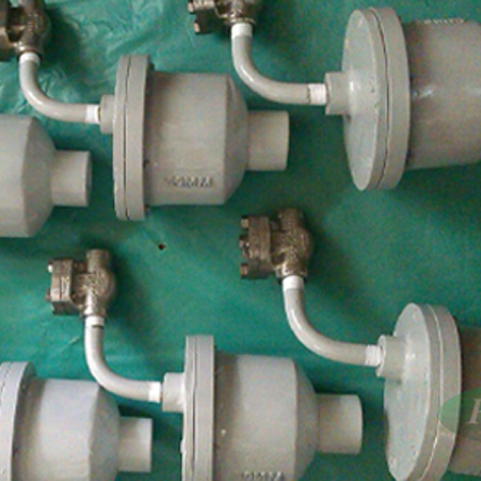
Air Eliminators
Air Eliminators and Combination Air Eliminator Strainers are designed to provide separation, elimination and prevention of air in piping systems for a variety of installations and conditions. Positive displacement and turbine meters, being volumetric measuring devices, cannot differentiate between liquid, air and vapor. Although the air content, in most instances, is small when compared with the product, it will contribute to measurable error. Large amounts of free air or vapor entrapped in a piping system, not only compromises meter accuracy but can lead to overspeeding of the measuring unit, creating excessive wear or possible unit failure. To insure accurate liquid measurement, it is necessary to remove all vapor and free all entrained air from the system prior to entry into the measuring unit.
decrease the velocity of the flowing stream and bring the liquid to a state of relative calm so that air bubbles or vapor will rise. As air and vapor collect in the top of the vessel, liquid volume is displaced. Once displaced to a predetermined point, a float-operated valve opens and the accumulated air and vapor is discharged from the tank. Liquid level then rises, causing the float-operated valve to close. Discharge rate is regulated by back pressure on the outlet side of the eliminator. If sufficient pressure differential is not available to maintain a proper rate, a back pressure valve should be installed.
In most applications, free air is eliminated without difficulty. Air which has become entrained in the product and carried along with the stream, however, must be separated from the liquid product and collected as free air before it can be discharged effectively. Entrained air in gasoline and low viscosity products separates and rises to the surface quite rapidly when the liquid velocity is decreased sufficiently. As viscosity increases, the rate of separation and rise of entrained air decreases and more retention time is required to effect surface operation.
Because tank size is a consideration in the storage and dispersal of collected air and vapor, it is not always economical to remove entrained air from the system. When considering installations handling such products as heavy oils, it is usually far more economical to prevent the entrance of entrained air rather than eliminate it. Products such as fuel oil, diesel oil, kerosene and LPG have a tendency to foam, causing air to be discharged in the form of vapor. Petroleum products in this form are hazardous when discharged to the atmosphere and, for this reason; require large air eliminators to accommodate increases in surface tension. Installation of the air eliminator must be on the upstream inlet side of the meter on the discharge side of the pump. Discharge may be vented to the meter outlet, back to storage, or into a sump, condensation drum or tank.








